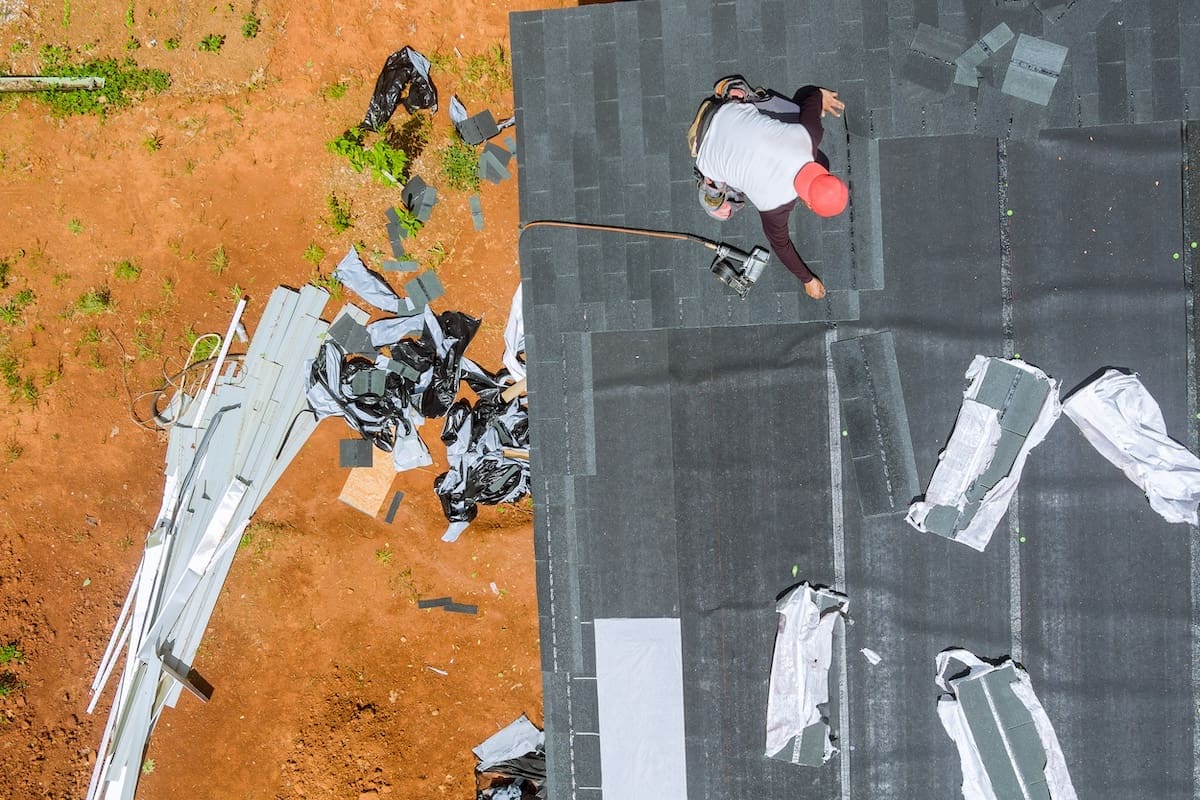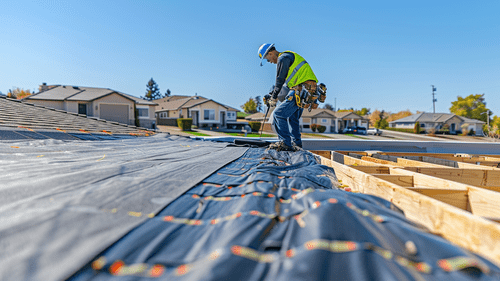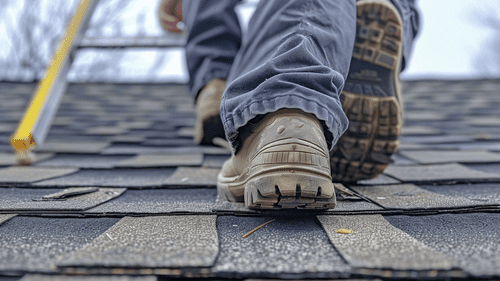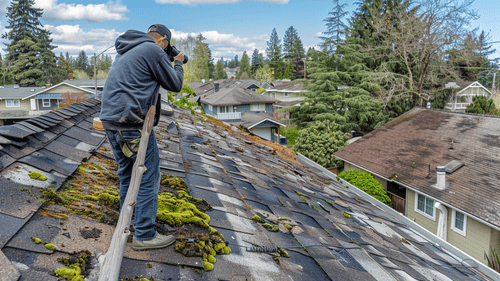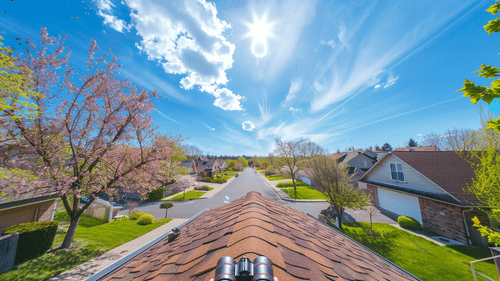Did you know that homes with roofs built before 2015 suffered 90% damage during severe storms, while newer roofs experienced only 28%? Your roof is more than just the top of your house—it's your first line of defense against weather extremes. Selecting the right roof style can make a significant difference in how well your home stands up to heavy rain, high winds, or snow loads. But with so many options available, how do you know which design offers the best protection for your specific situation?
The decision between a traditional gable roof, a modern flat design, or another style involves weighing factors beyond just appearance. Each roof type comes with its own set of advantages and potential weaknesses depending on your local climate. In the following sections, we'll examine how different roof styles perform in various weather conditions, what makes newer roofs so much more resilient, and how to match the right roof design to your regional weather patterns—giving you the information you need to make a choice that provides both protection and peace of mind for years to come.
Gable Roofs: Traditional Design with Modern Considerations
The distinctive triangular shape of gable roofs has adorned homes for centuries, and with good reason. These classic designs excel particularly in regions that experience significant rainfall or snowfall. The steep pitch of a gable roof isn't just an aesthetic choice—it serves a crucial functional purpose by creating an efficient pathway for precipitation to flow off the structure. Water and snow naturally slide down the angled planes rather than accumulating, which significantly reduces the risk of leaks and structural damage over time.
This natural shedding capability becomes especially valuable during heavy storm seasons. The steeper the pitch, the more effectively a gable roof can handle substantial precipitation without allowing moisture to penetrate the roofing materials. In snow-prone regions, this design prevents dangerous snow loads from building up and potentially causing structural failure—a critical safety feature that homeowners in northern climates particularly appreciate. The angle of the roof essentially works with gravity rather than against it, providing passive protection that requires no mechanical intervention.
The correlation between proper gable construction and long-term durability cannot be overstated. When built according to modern standards, with appropriate attention to structural supports and quality materials, gable roofs can last 30+ years with minimal intervention. The key lies in the precision of the framing—properly installed rafters and trusses distribute weight evenly across the structure, while adequate bracing prevents warping or shifting over time. This attention to structural integrity pays dividends through decades of reliable protection.
Cost-effectiveness analysis: initial investment vs. long-term value
From a financial perspective, gable roofs offer compelling advantages that extend beyond their protective capabilities. The relatively straightforward design translates to material efficiency that can significantly impact project costs. The simple geometric shape means less waste during construction, as materials can be cut and installed with minimal customization. This efficiency extends to labor costs as well—experienced roofing crews can typically complete a standard gable roof installation more quickly than more complex designs, resulting in lower labor expenses.
When comparing the total investment required for different roof styles, gable designs frequently emerge as the economical choice. The standard materials used—typically asphalt shingles, wood shakes, or metal panels—are widely available and competitively priced. Even when homeowners opt for premium materials, the straightforward installation process helps keep overall costs manageable. This accessibility makes gable roofs particularly appealing for budget-conscious homeowners who don't want to compromise on quality or protection.
The long-term value proposition becomes even more apparent when considering maintenance requirements. The simple design means fewer potential failure points compared to more complex roof configurations. Valleys, dormers, and multiple intersections—common in more elaborate roof designs—are frequently the first areas to develop problems. By minimizing these vulnerable zones, gable roofs typically require less frequent repairs and maintenance over their lifespan. This translates to lower ownership costs when viewed across the decades a roof will serve a home.
Structural vulnerabilities in high-wind environments
Despite their numerous advantages, gable roofs do present specific challenges in certain environments that homeowners must consider. Their performance in high-wind conditions represents their most significant potential vulnerability. The vertical end walls of a gable roof (the triangular portions) can act like sails in strong winds, catching air and creating substantial pressure that can stress the entire structure. In extreme cases, particularly with improperly constructed roofs, this pressure can lead to catastrophic failures during severe storms or hurricanes.
This vulnerability underscores the critical importance of proper bracing and construction techniques when installing gable roofs in wind-prone areas. Adequate diagonal bracing within the attic space provides essential reinforcement against lateral forces. Hurricane straps or clips that secure roof trusses to wall plates create crucial connections that help maintain structural integrity during high winds. These seemingly small additions during construction make a profound difference in how the roof system performs under stress.
The dramatic contrast in damage rates between pre-2015 and post-2015 roofs—90% versus 28%—reflects significant improvements in construction standards and practices. Building codes in many regions have evolved to require more robust fastening systems, strategic reinforcements, and wind-resistant designs specifically addressing these known vulnerabilities. Modern gable roofs incorporate lessons learned from past failures, with improved truss design, better quality control during installation, and more durable materials. These advancements have transformed what was once considered a potential weakness into a manageable design consideration, allowing homeowners to enjoy the benefits of gable roofs even in regions that occasionally experience severe weather events.
Flat Roofs: Practical Solutions for Contemporary Homes
The clean, horizontal lines of flat roofs have become increasingly popular in contemporary architecture, offering practical benefits that extend well beyond their distinctive aesthetic appeal. Despite their name, flat roofs typically incorporate a slight pitch (usually 1-10 degrees) to facilitate drainage while maintaining their characteristic appearance. This design choice translates into tangible economic advantages during both initial construction and throughout the life of the structure.
The material efficiency of flat roofs represents one of their most compelling financial benefits. With significantly less square footage than pitched alternatives covering the same living space, flat roofs require fewer materials to complete. This reduction applies not only to the roofing membrane itself but also to the supporting structure, which doesn't need to accommodate the complex framing required for pitched designs. The simplified construction process typically results in faster installation times, further reducing labor costs and minimizing the disruption to homeowners during roof replacement projects.
Maintenance considerations for flat roofs differ substantially from their pitched counterparts, creating both challenges and opportunities. While they require more frequent inspections to ensure drainage systems remain clear and functional, these inspections are inherently safer and simpler to conduct. The flat surface eliminates the need for specialized equipment or safety harnesses that pitched roof inspections demand. Additionally, when repairs become necessary, crews can work more efficiently on the level surface, potentially reducing repair costs compared to work on steeply pitched alternatives.
Versatility and additional functionality options
Perhaps the most distinctive advantage flat roofs offer is their ability to transform otherwise unused space into functional areas that extend a home's livable footprint. Urban homeowners particularly appreciate the opportunity to create rooftop living spaces that provide outdoor recreation areas in environments where yard space comes at a premium. These rooftop decks and gardens can significantly increase a property's usable square footage without expanding its ground-level footprint, effectively creating valuable outdoor living space from thin air.
The environmental benefits of rooftop gardens extend beyond merely creating pleasant spaces. These green installations help manage stormwater runoff, reduce urban heat island effects, and can even extend the lifespan of the roofing materials by protecting them from UV exposure and temperature fluctuations. For environmentally conscious homeowners, this represents an opportunity to contribute positively to their local ecosystem while enhancing their property's functionality.
Flat roofs also provide ideal platforms for solar panel installation, offering advantages that pitched alternatives cannot match. The open, unobstructed surface allows for optimal panel placement and orientation to maximize energy production. Installation costs typically run lower as well, since technicians can work more safely and efficiently on the level surface. As renewable energy continues gaining prominence, this compatibility with solar technology represents an increasingly valuable feature that forward-thinking homeowners recognize as an investment in both sustainability and long-term utility savings.
Weather-related challenges and modern solutions
Despite their numerous advantages, flat roofs historically faced challenges related to weather resistance that required innovative solutions. Water management represents the most significant concern, as even slight depressions in the surface can lead to ponding—standing water that potentially compromises the roofing membrane over time. Modern flat roof designs address this vulnerability through sophisticated drainage systems including properly positioned scuppers, internal drains, and slight tapered designs that actively direct water toward discharge points.
Advanced membrane materials have revolutionized flat roof performance in recent years. EPDM (ethylene propylene diene monomer), TPO (thermoplastic polyolefin), and modified bitumen systems offer significantly improved waterproofing capabilities compared to older tar-and-gravel approaches. These contemporary materials provide superior resistance to UV degradation, temperature fluctuations, and standing water, dramatically extending service life expectations for properly installed flat roofs.
The insulation requirements for flat roof structures differ from pitched alternatives in important ways. Without the natural air space that pitched roofs create in attic areas, flat roof designs must incorporate insulation directly into the roof assembly. Modern flat roof systems utilize rigid foam insulation boards with impressive R-values that meet or exceed energy code requirements. This integrated approach to insulation can actually provide more consistent thermal performance than some traditional attic insulation methods, contributing to improved energy efficiency throughout the seasons. The continuous insulation plane eliminates the thermal bridging common in some pitched roof framing systems, potentially reducing heating and cooling costs over time.
The 2015 Watershed: Understanding the Dramatic Improvement in Roof Performance
The striking disparity between damage rates in pre-2015 versus post-2015 roofs—90% compared to just 28%—represents one of the most compelling statistics in modern construction evolution. This dramatic improvement didn't occur by chance but resulted from a convergence of regulatory changes, material advancements, and installation practice improvements that collectively transformed roof system resilience. The year 2015 marked a pivotal moment when numerous updated building codes took effect across multiple states, particularly in hurricane-prone regions along the Atlantic and Gulf coasts.
These code revisions directly addressed vulnerabilities exposed during severe weather events in previous years. Minimum wind resistance requirements increased substantially, forcing manufacturers and installers to implement stronger attachment methods for roofing materials. Simultaneously, inspection protocols became more rigorous, ensuring that installations actually met the enhanced standards rather than merely claiming compliance. The cumulative effect of these regulatory changes created a clear demarcation between earlier construction practices and the significantly more resilient approaches that followed.
Material innovations played an equally important role in this performance revolution. Shingle manufacturers introduced advanced adhesive strips that activate during installation to create stronger bonds between individual shingles, dramatically improving wind resistance. Underlayment materials evolved from traditional felt paper to synthetic products offering superior tear strength and moisture resistance. Even basic fasteners underwent redesign, with improved corrosion resistance and holding power. These seemingly small advancements combined to create roof systems fundamentally more capable of withstanding extreme conditions than their predecessors.
Implementation of hurricane straps and enhanced fastening systems
Among the most significant advancements contributing to the 2015 watershed moment was the widespread adoption of hurricane straps and enhanced fastening systems. These metal connectors create continuous load paths from roof structures down to foundations, addressing a critical vulnerability in older construction methods. Traditional nail connections between roof trusses and wall top plates proved inadequate during high-wind events, allowing entire roof structures to separate from walls—a catastrophic failure mode responsible for extensive damage in previous decades.
Hurricane straps provide dramatically improved resistance to uplift forces generated during severe storms. These galvanized metal connectors physically wrap around roof trusses and securely attach to wall framing, requiring significantly more force to fail than traditional connections. The implementation of these simple yet effective devices varies by roof style—gable roofs typically require more extensive bracing due to their vertical end walls, while hip roofs benefit from their inherently more aerodynamic shape but still need secure connections at all bearing points.
The cost implications of these enhanced fastening systems remain remarkably modest relative to their impact on performance. Adding comprehensive hurricane straps to a typical residential roof during construction typically adds less than 1% to the overall project cost—a minimal investment considering the potential savings in damage prevention. Retrofitting existing structures proves more challenging and expensive, often requiring partial removal of interior wall coverings to access connection points, but even these costs pale in comparison to potential repair expenses following major storm damage. This favorable cost-benefit ratio explains why many homeowners choose to voluntarily upgrade fastening systems even when not strictly required by local building codes.
Inspection guidelines for pre-2015 roofs
For homeowners with pre-2015 roofs still in service, understanding specific vulnerabilities and recognizing warning signs of potential failure becomes crucial for risk management. Visual inspection from both exterior and interior perspectives can reveal telling indicators of structural weakness. From outside, missing or damaged shingles, particularly along edges and ridges, suggest vulnerability to wind uplift. Sagging along roof lines indicates potential structural weakness that could fail during loading events. From inside attic spaces, water stains, light penetration, or visible gaps in connections between structural members all warrant immediate professional assessment.
Several specific warning signs deserve particular attention as they frequently precede catastrophic failures:
- Nail pops: Visible nail heads pushing up through shingles indicate movement in the underlying structure and potential fastener failure
- Truss uplift: Separation between interior ceiling drywall and walls during seasonal changes suggests inadequate truss securement
- Deteriorated sheathing: Soft spots or visible delamination in roof decking dramatically compromises the foundation for roofing materials
- Improper flashing: Failed or improperly installed flashing around penetrations and transitions creates vulnerability to water intrusion
- Visible gaps: Any observable separation between structural elements indicates potential failure points during high-wind events
Fortunately, retrofit options exist for most pre-2015 roofs that can significantly improve their resilience without complete replacement. Strategic reinforcement of existing connections using hurricane straps or retrofit brackets can address many structural vulnerabilities. Supplemental fasteners can secure roof decking more thoroughly to underlying framing. Edge reinforcement systems specifically target the roof perimeter—typically the initial failure point during high winds. While these improvements require investment, they offer substantial protection enhancement and may qualify for insurance premium reductions that partially offset costs over time.
Decision Framework: Matching Roof Style to Regional Weather Patterns
Selecting the optimal roof design requires careful analysis of the specific environmental challenges a structure will face throughout its service life. Regional weather patterns should heavily influence this decision, as different roof styles demonstrate distinct performance characteristics under various conditions. In high-wind environments, particularly coastal areas subject to hurricanes or regions experiencing frequent tornadoes, hip roofs generally outperform gable alternatives due to their aerodynamic shape and absence of vertical surfaces that catch wind. The four-sided design distributes wind pressure more evenly, reducing stress concentration at any single point.
For areas experiencing heavy snowfall, steeper pitched roofs—typically gable designs with pitches exceeding 6:12—provide superior performance by facilitating snow shedding before accumulation reaches dangerous loading thresholds. The straight slopes create natural pathways for snow movement, preventing the buildup that can stress structural components. Conversely, in regions prone to hail events, impact resistance becomes the priority consideration, making material selection potentially more important than roof geometry. Modern impact-resistant shingles combined with proper underlayment can provide excellent protection regardless of whether they're installed on gable, hip, or other roof designs.
Rainfall intensity and frequency should similarly influence roof selection decisions. Areas receiving consistent heavy precipitation benefit from designs that quickly channel water away from the structure. While properly designed flat roofs with adequate drainage systems can perform effectively, pitched designs generally provide superior long-term performance in these environments by minimizing the opportunity for water penetration. The ideal pitch depends on specific regional conditions, with steeper slopes offering faster drainage but potentially increasing wind vulnerability—highlighting the importance of balancing multiple environmental factors rather than optimizing for a single condition.
Long-term cost analysis beyond installation
The true cost of a roof extends far beyond the initial installation expense, encompassing maintenance requirements, repair frequency, insurance implications, and energy performance throughout its service life. Different roof styles generate distinctly different long-term cost profiles that informed homeowners should carefully consider. Insurance premiums frequently reflect carriers' loss experience with various roof designs, with many companies offering substantial discounts for impact-resistant materials and wind-resistant construction methods. These premium reductions can significantly offset higher initial costs for resilient designs, sometimes recouping the entire difference over a typical ownership period.
Maintenance schedules and associated expenses vary considerably between roof styles. Flat roofs generally require more frequent inspection and maintenance to ensure drainage systems remain functional and membrane materials maintain their integrity. While these inspections may occur more often, they typically cost less per event due to easier access. Pitched roofs may need less frequent attention but typically involve higher per-instance costs when repairs become necessary due to safety equipment requirements and more complex access challenges. The cumulative effect of these differences creates distinct total cost of ownership profiles that should inform selection decisions.
Energy efficiency considerations add another dimension to the long-term cost equation. Roof design significantly influences attic temperatures, which in turn affect cooling and heating requirements. In hot climates, designs that minimize solar heat gain through reflective materials and adequate ventilation can substantially reduce cooling costs. Some flat roof designs accommodate green roof installations or provide ideal platforms for solar panels, potentially transforming the roof from an expense into an energy-generating asset. These performance characteristics create meaningful long-term financial implications that extend well beyond the roofing material itself.
Balancing aesthetic preferences with practical performance
While performance considerations should drive roof selection decisions, aesthetic preferences inevitably influence homeowner choices as well. Neighborhood consistency represents a significant factor in many communities, where established architectural patterns create visual harmony that many residents value. Some neighborhoods—particularly those with homeowners associations—may have specific guidelines limiting roof style options. Even without formal restrictions, dramatic departures from neighborhood norms can potentially impact resale prospects by limiting the pool of interested buyers.
The resale value impact of various roof designs extends beyond neighborhood consistency to include broader market perceptions. Certain roof styles have become associated with specific architectural movements or housing types—Craftsman bungalows with their distinctive low-pitched gable roofs, mid-century modern homes with dramatic flat or butterfly designs, or Mediterranean styles with their characteristic clay tile. Maintaining architectural integrity through appropriate roof selection preserves the home's design coherence and typically maximizes market appeal within its specific category.
Finding the optimal balance between aesthetic preferences and practical performance requires thoughtful analysis of both elements rather than treating them as competing priorities. Modern roofing materials offer increasingly diverse options that can satisfy aesthetic requirements while delivering excellent performance. Metal roofing now comes in profiles mimicking traditional shingles, shakes, or tiles while providing superior durability and wind resistance. Composite materials deliver the appearance of natural slate or wood with enhanced impact resistance and longevity. These innovations enable homeowners to achieve desired visual outcomes without compromising the practical protection their roof must provide against regional weather challenges.
Conclusion: Protecting Your Investment Through Informed Roof Choices
Your roof isn't just another component of your home—it's your primary shield against nature's extremes. The remarkable improvement in performance between pre-2015 and modern roofs (90% damage versus just 28%) demonstrates how significantly construction standards have evolved. Whether you choose the traditional protection of a gable design or the versatile functionality of a flat roof, aligning your selection with local weather patterns while incorporating modern fastening systems and materials will dramatically enhance your home's resilience. The modest additional investment in hurricane straps, quality materials, and proper installation pays enormous dividends through decades of reliable protection and potentially lower insurance premiums.
Ultimately, your roof represents the intersection of practical necessity and personal expression—a critical system that must perform flawlessly while complementing your home's architectural identity. The right choice balances aesthetic considerations with the specific environmental challenges your region faces. As weather patterns become increasingly unpredictable and extreme events more common, the quality of your roof isn't just about preventing leaks—it may determine whether your home stands strong or becomes another statistic in the aftermath of the next major storm. Isn't your family's safety worth that extra consideration?

